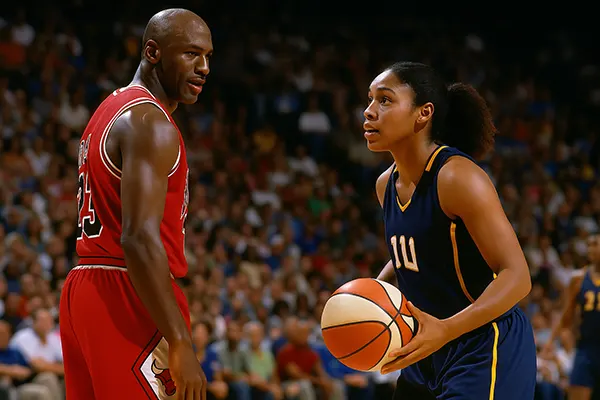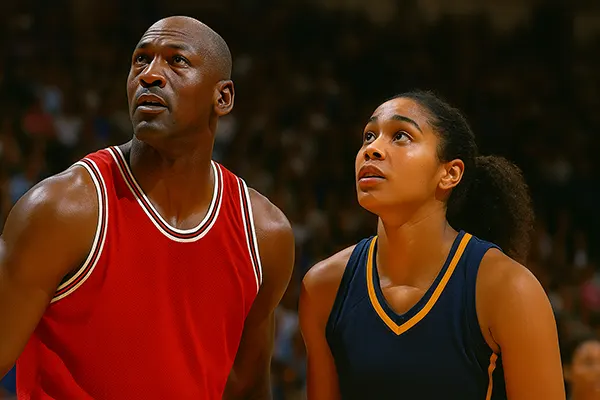
Michael Jordan’s Hidden Legacy: His Influence on Women’s Basketball
While Michael Jordan is widely celebrated for his extraordinary impact on the NBA and global sports culture, his role in shaping the narrative of women’s basketball remains largely underexplored. Beyond slam dunks and championship rings, Jordan’s legacy quietly extends into the courts of the WNBA and women’s sports development. His financial contributions, media presence, and indirect support have left a lasting imprint that continues to inspire generations of female athletes. This article examines the multifaceted ways in which Jordan has influenced women’s basketball—often behind the scenes but always profoundly.
The Power of Image: Inspiring Young Female Athletes
During the 1990s, Jordan was not merely a basketball player—he was a cultural icon. His dominance on the court, charismatic persona, and omnipresence in media campaigns made him a household name worldwide. While the primary audience for his image was presumed to be male, countless young women found inspiration in his commitment, skill, and poise. These portrayals planted the seeds of aspiration for many who would later pursue careers in women’s basketball.
Sports historians and sociologists have noted a surge in girls’ participation in basketball in the late 1990s and early 2000s, correlating with Jordan’s final years in the NBA. Role models in sports do not need to share gender with their admirers—they need to convey a spirit of excellence and possibility. Jordan did exactly that for female athletes, often serving as their north star.
His marketing presence—on posters, in commercials, and in televised games—offered young viewers a template of what greatness could look like. For many aspiring sportswomen, Jordan wasn’t just a player to watch—he was someone to emulate. His excellence reshaped how athletic dreams were conceived, regardless of gender.
Media Representation and Cultural Impact
Jordan’s influence in advertising reshaped the visibility of basketball itself. Campaigns such as Nike’s “Be Like Mike” carried cross-gender resonance. Girls were not just spectators—they began to see themselves as potential stars. The unspoken message was simple: greatness is not gender-specific.
Furthermore, Jordan’s recurring features in magazines like *Sports Illustrated* and *SLAM* served as aspirational content for all basketball fans. He transcended gender categories, reaching across divides to connect through athletic mastery and dedication. This broad appeal contributed to increased interest in women’s leagues, even as they struggled for visibility.
By embodying peak athleticism and professionalism, Jordan indirectly pressured sports media to start taking women’s basketball more seriously. If girls were modelling their play after him, then their efforts deserved acknowledgment and coverage. That shift began to unfold as the 2000s progressed.
Financial Commitment to Women’s Basketball
Michael Jordan’s tangible support for women’s basketball took a pivotal turn in 2021, when he became one of the largest individual investors in the WNBA. As part of a $75 million capital raise, Jordan joined a group of investors aiming to stabilise and expand the women’s league. His involvement gave the WNBA a powerful symbol of validation and long-term support.
This financial commitment was not just a token gesture. By associating his name and capital with the WNBA, Jordan endorsed the league’s relevance and viability. His investment came at a time when women’s sports were still struggling for equal media coverage and sponsorship opportunities. His presence helped attract further attention and legitimised the growth trajectory of the women’s game.
Beyond the WNBA, Jordan Brand has signed female athletes, including WNBA stars like Kia Nurse and Maya Moore. The brand’s expansion into women’s basketball merchandise marked a turning point in how seriously female athletes were regarded in commercial basketball culture.
Brand Influence and Athlete Representation
Jordan Brand’s inclusion of women in its marketing and sponsorships has shifted the visual narrative of basketball endorsement. Female players are no longer excluded from elite branding—they now represent it. This change has offered young girls visible proof that success in women’s basketball can attract the same prestige as the men’s game.
By amplifying women’s representation within the Jordan Brand, MJ helped rewrite the commercial expectations for female athletes. This visibility matters not just for sales, but for societal perception and legitimacy. The message is clear: women’s basketball is elite, marketable, and worthy of top-tier promotion.
These endorsements also create a ripple effect across youth sports. Young girls now dream not only of playing professionally but of securing their own shoe deals and endorsement contracts. That ambition, seeded by Jordan’s actions, expands the scope of what’s possible in women’s sports.

Changing the Landscape: WNBA Before and After Jordan
When the WNBA was founded in 1996, it faced numerous challenges, including minimal media coverage, limited sponsorship, and public scepticism. Though Jordan was still playing for the Chicago Bulls at the time, the cultural momentum he had built helped set the stage for a broader acceptance of basketball as a legitimate path for women.
His retirement in 1998 and subsequent Hall of Fame induction only cemented his mythos. As his career was celebrated globally, attention inevitably turned to the future of basketball—both men’s and women’s. In this transitional phase, the WNBA began to establish its voice, often drawing from the groundwork laid by Jordan’s popularity and professionalism.
Over the last decade, the league has gained more stability, higher ratings, and increased investment. Jordan’s involvement as a financial backer and cultural supporter has helped fuel this progress. While he may not appear courtside at every game, his legacy underpins much of the WNBA’s evolving identity.
Long-Term Influence on Popularity and Respect
Today, the WNBA benefits from an ecosystem where women’s sports receive more respect than ever before. Although challenges remain, the league’s current growth owes much to the quiet, cumulative impact of Jordan’s influence—both as a businessman and as a symbol of basketball excellence.
Female athletes now cite Jordan as a pivotal influence in their lives. His iconic work ethic, leadership, and brand legacy form part of their basketball vocabulary. This reverence isn’t mere nostalgia—it’s an active force shaping their careers and ambitions.
In fostering a generation of athletes who grew up admiring his play, Jordan contributed to a culture that takes women’s basketball seriously. His legacy, while most visible in the NBA, has also empowered a parallel movement: the steady rise of women’s basketball on a global stage.
